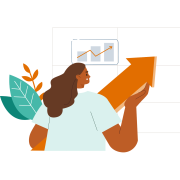July 10th, 2024 | Written by Jess Dart
How to Apply Measurement, Evaluation, and Learning (MEL) to a Community Garden Project
For newbies, measurement, evaluation and learning (MEL) can feel daunting – and that’s understandable. There is a lot going on here. But MEL, at its very core, can be boiled down into something that’s quite simple to understand. It is a framework that helps us get clear on what we’re doing, what is working and what is not. This feedback helps us modify our approach to create a greater positive impact. So, we thought, why not explore the simplicities of good MEL through the lens of a community garden project?
First things first, what is Measurement, Evaluation, and Learning?
Measurement, evaluation and learning, or MEL, is a comprehensive approach used by teams and organisations to track progress, adjust and optimise their effectiveness and report back to their stakeholders. It’s been around for several decades in different forms, but we trace the early use of the acronym back to Oxfam in the early noughties. At its core, measurement involves people collecting numbers and stories in a systematic way to track progress and outcomes. The evaluation component of MEL then sees teams put this measurement data through a few different lenses and interpret the results, helping organisations understand what is working, what isn’t, and why. Learning is the critical piece and happens all the way through MEL. Learning happens when insights gained from measurement and evaluation are used to inform decision-making and drive continuous improvement. MEL helps teams not only demonstrate accountability to stakeholders but also fosters a culture of transparency and innovation, ensuring that they can adapt and thrive in a constantly changing environment.
So, let’s imagine you and your friends decide to build a community garden in your neighbourhood.
MEL wasn’t the first thing you did. You first asked around to see if there was interest, did some research about how other communities have done this, and developed a project plan together with a working group. You decided that your desired outcomes for this project were fostering community connection and increasing access to healthy food. Some people call this phase “discovery and planning”.
So, once you have sorted out your project plan and decided what you want to do, MEL comes into play. MEL helps you check on your progress, adjust, and make more impact!
Here’s how MEL might work for your community garden project:
Measurement involves documenting and keeping track of specific aspects of your project in an ongoing manner. For example, you might track the health of the plants, and who is (and who isn’t) turning up to the garden. You might also keep track of any stories or feedback that you hear. Your organising group might meet once a month and look at this data, learn what is working well and what is not, and decide to make some adjustments. For example, you might do more work to ensure everyone is informed about gardening days and maybe change how often you water the plants. By making small adjustments based on these measurements, you can enhance the garden’s growth and community engagement.
Evaluation steps in to answer your bigger questions. For example, you might be wondering if you’re really having an impact on community cohesion. To do this, once a year, you might do a bit more data collection – such as collecting some significant change stories from participants, then you call everyone together, look at the stories and data from across the year, and using this data, you answer some of these bigger questions. Depending on your data, this could lead to a bigger change; maybe you’ll decide to expand the garden or pack up altogether!
Learning is woven through all parts of MEL—from the pre-work you did to design your program to the insights you draw from your measurement data to adjust and learn around your bigger questions. By applying this lens, gardeners and organisers can learn and make informed decisions to improve garden practices, enhance participant engagement, and optimise resource use. This ongoing learning process helps adapt strategies, foster community involvement, and ensure the long-term success and sustainability of the garden. Learning is also a mindset! You set off with an inquiry mindset to try, test, and learn your way to more impact.
Takeaways
By combining measurement to make ongoing adjustments and evaluation to answer the bigger questions, your community garden project can thrive, and you’ll all go on a learning journey together.
In simple terms, MEL for your community garden project is like monitoring the garden’s progress, identifying what is working well, and learning from the experience to make the garden even better in the future.
Stakeholder involvement and collaborative practices
MEL is best done locally by the people running the project. If you get funding for your project, you may need to report on progress to the funder, and of course the data you collect for MEL can help you to provide evidence of progress – and this can help you get more funding. But the real value-add of MEL is helping you to achieve more and better impact.
Sometimes, funders may want to conduct an external evaluation of your project. If you have all your MEL data at your fingertips, this makes the evaluation much easier and more effective.
Make MEL your superpower
So, regardless of what outcomes you are shooting for, the chances are that taking a learning stance, looking at numbers and stories together, and adapting as you learn will help your chances of success. And it’s true! Evidence shows that teams that apply MEL are more likely to achieve outcomes than those that don’t!







